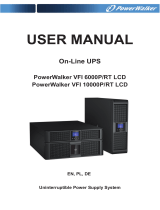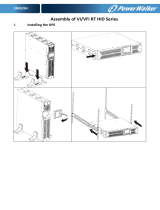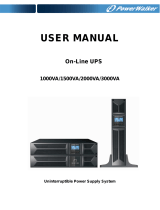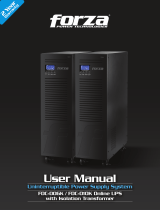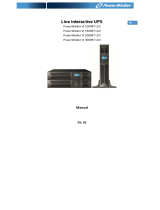
5
Follow all local regulations for the disposal of packing materials.
Product
The product is made up of recyclable materials.
Dismantling and destruction must take place in compliance with all local
regulations concerning waste. At the end of its service life, the product must be
transported to a processing center for electrical and electronic waste.
Battery
The product contains lead-acid batteries that must be processed according to
applicable local regulations concerning batteries.
The battery may be removed to comply with regulations and in view of correct
disposal.
1.2 Electronic equipment protection
The uninterruptible power system (UPS) protects your sensitive electronic
equipment from the most common power problems, including power failures,
power sags, power surges, brownouts, line noise, high voltage spikes,
frequency variations, switching transients, and harmonic distortion.
Power outages can occur when you least expect it and power quality can be
erratic. These power problems have the potential to corrupt critical data,
destroy unsaved work sessions, and damage hardware - causing hours of lost
productivity and expensive repairs.
With the UPS, you can safely eliminate the effects of power disturbances and
guard the integrity of your equipment. Providing outstanding performance and
reliability, UPS’s unique benefits include:
True online double-conversion technology with high power density, utility
frequency independence, and generator compatibility.
Selectable High Efficiency mode of operation.
Standard communication options: one RS232 communication port, one
USB communication port, one dry in port and dry out port.
Optional connectivity cards with enhanced communication capabilities.
Firmware that is easily upgradable without a service call.




















